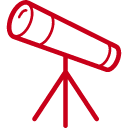Enhanced Force Measurement System (No. 0048)
|
|
<< Back to all technologies |
Summary
Enhanced force measurement system capable of measuring the magnitude and direction of three components of force.
The force sensor market size is currently about USD 1.8 billion and is predicted to grow at a CAGR of 5.5%. Rising demand for industrial robots and growing safety features in automobiles are the key factors driving the growth of the force sensor market. However, many objects are curved, or deform when forces are applied to them, as in the case in for example a car tire, and thus there are non-normal components of force to consider. Conventional force plates only measure the normal force. Here, we present a promising force measurement system developed by a group of researchers led by Prof. Mahesh Bandi. The developed system overcomes the above problem and provides a more precise force measurement.
Applications
- Tire Contact Analysis
- Foot Force Analysis
- Collision Force Analysis
- Posture Analysis
- Tactile Sensing
Advantages
- Full Vectorial Force Measurement
- Shear Measurement
- Dynamic Measurement
Technology
A new system to measure the magnitude and direction of three components of force. Essentially, Prof. Bandi has developed a system for obtaining force, the system including: a block (212) made of a photoelastic material including a first surface (208) on which an object (204) is exerting the force to the block (212); and three or more polariscopes (232), each including a light source (220), configured around the block (212) to measure photoelastic intensities; characterised in that each light source (220) is configured to emit a ray of light (216) to enter the block (212) through and normal to one surface of the pair of surfaces (228), transmit through the block (212), reflect off the first surface (208) having the reflective coating, transmit back through the block (212), and exit the block (212) through and normal to the other surface of the pair of surfaces (228).
Media Coverage and Presentations
CONTACT FOR MORE INFORMATION
![]() Graham Garner
Graham Garner
Technology Licensing Section
![]() tls@oist.jp
tls@oist.jp
![]() +81(0)98-966-8937
+81(0)98-966-8937





